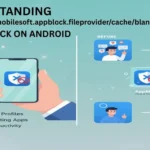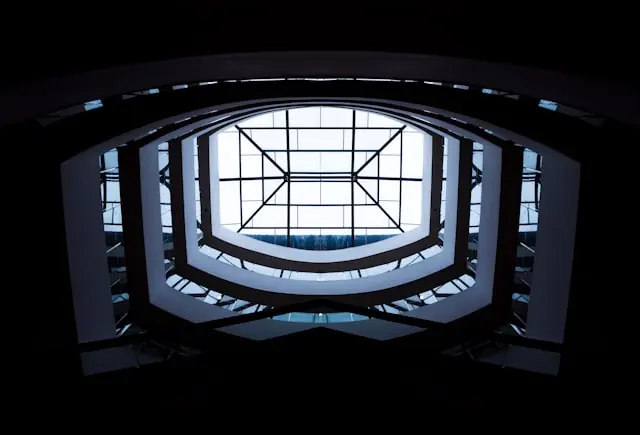In a world filled with complexity, new systems and frameworks often emerge to help us make sense of it all. One such intriguing concept is Prizmatem. The name itself sounds futuristic and innovative — and that’s because it is.
The word Prizmatem brings together the idea of a “prism”, which splits light into colors, and a “system”, which organizes and manages things. Together, it suggests a process or framework that takes something complicated and refracts it into smaller, clearer parts — making it easier to understand, analyze, and use.
Whether it’s data, decision-making, technology, or creativity, the idea of Prizmatem can be applied across different fields. This article explores what Prizmatem means, how it works, its applications, benefits, and limitations — all in an easy, human-friendly way.
What is Prizmatem?
Prizmatem is a concept or system designed to break down complex problems, data, or processes into simpler, understandable layers. The term represents both a metaphor and a method — a way of seeing things from multiple angles instead of just one.
In simple words:
Prizmatem helps you understand complexity by refracting it into clarity.
Just as a prism splits white light into a rainbow of colors, Prizmatem splits large problems or systems into smaller parts. These parts can then be studied individually and combined again for better insight and decision-making.
Depending on the context, Prizmatem can mean:
-
A thinking framework used to view problems from different perspectives.
-
A technological system that processes data in layered or optical ways.
-
A creative approach to understanding design, innovation, or human behavior.
The Origins and Meaning Behind Prizmatem

The foundation of Prizmatem lies in the principle of refraction — how light bends and separates when it passes through a prism. This physical idea has been translated into a mental and technological framework.
The concept emerged from the growing need to deal with multi-dimensional data and complex systems. Traditional methods often focus on one aspect at a time, which can limit understanding. Prizmatem takes the opposite approach — it embraces complexity by examining it from all sides.
In philosophy and design thinking, similar approaches existed — breaking things down into components and understanding each in its own context. But Prizmatem goes a step further by combining scientific precision with creative flexibility.
Trending: 10 Power-Benefits of oncepik That Will Boost Your Creativity
How Prizmatem Works
To understand how Prizmatem operates, imagine taking a complicated object — say, a business model, a scientific problem, or a large dataset — and passing it through a mental prism. The result? You don’t just see one side; you see many.
Step-by-Step Process
Input – The Whole Picture
Begin with a complex issue or dataset. This could be anything: a project, an organization, a creative challenge, or even a personal decision.
Refraction – Breaking It Down
Just like light through a prism, the complex input is divided into multiple “spectrums” or perspectives. For instance: technical, emotional, financial, environmental, or cultural layers.
Analysis – Understanding Each Layer
Each perspective is examined separately. This step reveals hidden patterns, connections, and insights that aren’t visible when looking at the whole.
Reconstruction – Integrating the Layers
Once the smaller parts are clear, they are combined again — forming a complete, balanced view of the situation.
Action – Applying the Insight
With clarity achieved, decisions can be made more intelligently and efficiently.
Example Table: The Prizmatem Process
| Stage | Action | Result |
|---|---|---|
| Input | Complex data or problem | Overwhelming and unclear |
| Refraction | Split into smaller layers or perspectives | Manageable segments |
| Analysis | Study each layer | Clear insights emerge |
| Reconstruction | Combine layers again | Full understanding |
| Action | Use the insights | Smart and informed decisions |
Core Principles of Prizmatem

The Prizmatem concept follows a few key principles that make it stand out:
Multi-Perspective Thinking
Always look at the subject from more than one angle. This helps uncover hidden truths and balances biases.
Layered Architecture
Systems or ideas are not flat; they consist of layers that can be separated, understood, and optimized individually.
Transparency and Clarity
The goal of Prizmatem is not complexity for its own sake but clarity through structure.
Adaptiveness
The system evolves as conditions change — it’s flexible and responsive.
Integration of Science and Creativity
It combines logical thinking with artistic imagination.
Applications of Prizmatem
The beauty of Prizmatem lies in its versatility. It can be applied in almost any field — from business and technology to education and personal life.
1. Business and Strategy
Businesses are complex systems with multiple moving parts — markets, teams, operations, customers, and finances. Using a Prizmatem approach helps leaders see the full picture.
Applications:
-
Strategic planning through multiple lenses (market, technology, people, finance).
-
Innovation workshops that break problems into creative angles.
-
Identifying risks by viewing challenges from diverse perspectives.
This helps organizations make more balanced decisions, reduce blind spots, and innovate effectively.
2. Education and Learning
In education, Prizmatem thinking helps teachers and students understand concepts deeply.
Example:
A lesson on climate change can be broken into scientific, cultural, political, and emotional layers. This layered approach allows students to connect better and think critically.
Benefits in Education:
-
Promotes creativity and critical thinking.
-
Makes learning multi-dimensional.
-
Encourages students to form their own understanding rather than memorizing facts.
3. Technology and Data Systems
In the tech world, Prizmatem is being explored as a light-based data framework — transmitting data using beams of light instead of radio signals. This makes communication faster and more energy-efficient.
It’s also used in data visualization and AI, where information is split into multiple dimensions to gain deeper insights.
Potential Uses:
-
Multi-layered data analytics.
-
Real-time decision systems.
-
Light-based communication and computing.
-
Smart visual user interfaces that adapt to user behavior.
4. Personal Development
Prizmatem thinking can also guide personal decisions.
Example:
If you’re deciding whether to switch careers, you can analyze the decision through these “prisms”:
-
Emotional: How does it make you feel?
-
Financial: What’s the income impact?
-
Social: How does it affect your relationships?
-
Practical: Can you adapt quickly?
-
Future-oriented: Where does it lead long term?
By breaking it down this way, you avoid one-dimensional thinking and gain full clarity.
5. Design and Creativity
Artists, architects, and designers use Prizmatem ideas to create layered visual experiences. In architecture, for example, it can help balance beauty, function, cost, and environmental impact.
In design, it helps merge logic and emotion — creating results that are both effective and meaningful.
Benefits of Prizmatem

Here are the main advantages of using the Prizmatem approach, whether as a mindset or technology:
1. Enhanced Clarity
It transforms complexity into simplicity. When something is refracted into its parts, it’s easier to see the underlying structure.
2. Better Decision-Making
By seeing multiple perspectives, you make balanced choices rather than reacting impulsively.
3. Greater Innovation
The process encourages creative problem-solving. It opens the door to unexpected ideas and solutions.
4. Higher Efficiency
Breaking down systems helps identify weak spots and optimize processes more effectively.
5. Risk Reduction
Viewing a situation from all sides minimizes the chances of overlooking potential risks.
6. Cross-Disciplinary Application
It works equally well in science, art, technology, and personal development.
7. Continuous Learning
Prizmatem encourages ongoing reflection and adaptation — essential qualities in today’s world.
Potential Limitations of Prizmatem
Like every framework, Prizmatem isn’t perfect. Here are some challenges and limitations to keep in mind:
1. Lack of Standardization
Since Prizmatem is still new, there aren’t fixed rules or established software tools for it yet.
2. Over-Analysis
Looking from too many perspectives can sometimes cause confusion or delay decisions — also known as “analysis paralysis.”
3. Implementation Costs
If used in technology (for example, in light-based communication), it may require advanced equipment and investment.
4. Misinterpretation
Because it’s a flexible concept, people may interpret it differently, leading to inconsistent results.
5. Early-Stage Development
As an emerging framework, it still needs more real-world examples, testing, and refinement.
Prizmatem vs Traditional Frameworks
| Aspect | Prizmatem | Traditional Models |
|---|---|---|
| Approach | Multi-perspective, layered | Linear or one-dimensional |
| Goal | Clarity through refraction | Simplification through reduction |
| Flexibility | Adaptive and evolving | Often fixed or rigid |
| Fields of Use | Business, tech, design, education, personal life | Usually limited to one domain |
| Thinking Style | Integrative and creative | Analytical or procedural |
| Outcome | Holistic understanding | Focused but partial view |
How to Apply Prizmatem in Daily Life

Even if you’re not a scientist or business leader, you can still apply Prizmatem thinking in your everyday life.
Step-by-Step Guide:
Identify the Problem
Choose something that feels complicated — a project, a conflict, or a decision.
Define the Perspectives
List the angles that matter (emotional, logical, social, financial, environmental, etc.).
Break It Down
Analyze each perspective separately. Write your observations.
Look for Patterns
Identify where perspectives overlap or contradict each other.
Integrate
Combine insights from all layers to create a full picture.
Take Action
Make a choice or solution that considers all layers.
Reflect
After action, assess the result and refine your understanding.
Simple Example:
Suppose you’re planning to start a new online business.
Using Prizmatem thinking, you’d look at it like this:
| Perspective | Key Questions |
|---|---|
| Financial | What’s the investment and profit potential? |
| Emotional | Are you passionate about this idea? |
| Market | What’s the demand and competition? |
| Social | How will this impact your personal life? |
| Technological | Which tools or platforms will you need? |
| Long-term | Can this business grow sustainably? |
By refracting your decision through these prisms, you can make smarter, balanced choices.
Real-World Examples of Prizmatem Thinking
While Prizmatem as a branded framework is relatively new, its mindset appears in many industries:
-
Tech startups use multi-layered analytics to understand user behavior from emotional, technical, and business perspectives.
-
Architects design buildings that balance light, energy efficiency, cost, and aesthetic experience.
-
Educators develop lessons that connect science, culture, and creativity.
-
Leaders use it to solve organizational challenges that involve human and technological elements.
Prizmatem, therefore, is not just a buzzword — it’s a way of thinking that’s already shaping modern innovation.
The Future of Prizmatem
The future of Prizmatem looks bright and colorful — much like the rainbow it symbolizes. As technology evolves, especially in the fields of AI, data visualization, and optical computing, Prizmatem will likely become more practical and powerful.
We can expect:
-
New software that helps visualize problems in multi-layered ways.
-
Data systems that use light or holographic interfaces.
-
Integration into education and creativity tools.
-
Broader adoption in decision-making models across industries.
In short, Prizmatem represents the next step in how humans and machines understand complexity — not by simplifying it away, but by embracing and organizing it.
Conclusion
Prizmatem is more than just a fancy term — it’s a philosophy of understanding. It reminds us that not everything has to be simplified to be understood; sometimes, it’s better to explore the full spectrum of possibilities.
By refracting complexity into layers, Prizmatem helps us think smarter, act wiser, and create with purpose. Whether used in business strategy, education, design, or everyday life, its principles guide us toward deeper clarity and innovation.
The world will continue to grow more complicated — but with Prizmatem thinking, we can always find light, color, and meaning within the chaos.
Frequently Asked Questions (FAQs)
1. What does Prizmatem mean?
Prizmatem refers to a system or mindset that breaks down complex problems into smaller, understandable parts — like a prism splitting light into colors.
2. Is Prizmatem a technology or a concept?
It can be both. It’s a conceptual framework for thinking, but in some contexts, it’s also used for light-based communication and data systems.
3. Where can Prizmatem be applied?
It can be used in business, technology, design, education, research, and personal decision-making.
4. How does it differ from other methods like SWOT or Design Thinking?
SWOT focuses on strengths and weaknesses, while Prizmatem focuses on seeing things through multiple layers or lenses. It’s more holistic and adaptable.
5. What are the main benefits of using Prizmatem?
Clarity, better decision-making, creativity, efficiency, and reduced risk.
6. Are there any downsides?
Yes. It’s still new, not standardized, and can sometimes lead to over-analysis or confusion if not applied correctly.
7. Do I need special tools to use it?
No. The mindset can be applied with simple brainstorming or mapping tools. However, advanced applications may use software or optical systems.
8. Can anyone use Prizmatem thinking?
Absolutely. It’s suitable for professionals, students, creatives, and anyone who wants to improve their clarity and problem-solving.
9. Is it related to light or color science?
The concept takes inspiration from the science of light, but it can be applied metaphorically to thinking and analysis as well.
10. What’s the ultimate goal of Prizmatem?
To turn complexity into clarity — helping people and systems see all sides of a problem and make better decisions.














Leave a comment